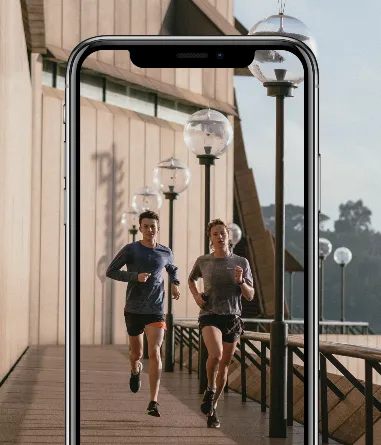Being an entrepreneur and launching a company at the height of the pandemic is something I hope to look back on as a mere speed bump in my journey. I’ve been in love with the health and fitness space for most of my life, and I’ve never seen it challenged the way it was in 2020. The ingenuity, resiliency, and camaraderie exhibited was nothing short of remarkable. The fact that the fitness and health industry is still expected to grow is a testament to this fact. In 2021, I expect some new trends and themes to emerge from the ashes of an unprecedented year.
- Reimagining big box gyms | It’s no secret big box gyms were under tremendous pressure in 2020. Though, I believe, big-box gyms have been due for a software update for some time now. This sector is in a great position to capitalize on the future of the fitness and health industry by leaning into collaborations and bespoke offerings with branded products, exclusive instructor deals, and personalized experiences. Imagine a recovery section sponsored by Therabody or Hyperice that also has CBD recovery shakes. Big box gyms maintain a captive audience that is incredibly valuable to brands.
- Influence via Localization and Celebrity | I’m not on Nextdoor, but from what I’ve heard of those that love it, the local community is king. Peloton secured a partnership with Beyonce, which created a tremendous buzz. But people also idolize their local instructor that may not have a massive following on Instagram. Think about the impact an influencer could have if they were focused on a hyperlocal community, not consumerism.
- Assessments | Remember running the mile in middle school P.E., as if it were enough to gauge someone’s health? The return of those days is upon us. The popularity of data and insights has ushered in the need (nay obsession?) to know how we stack up. Whether it manifests in a local hike or online class, people seek indicators of improvement in the form of assessments.
- Fitness at home | This trend is bittersweet. Most companies pivoted in the digital direction to maintain customer interest amidst Covid-19. While some reveled in the convenience of online classes from the comfort of their homes, others were overwhelmed with options. Companies like Peloton and Tonal who tied their content to equipment further developed brand loyalty, but for the others, I would expect some fatigue to occur over the next 12 months. Brands who cultivated a virtual community, while providing tangible value worthy of a cult following will be remembered forever.
- Alternative payments for fitness | E-commerce platforms like Affirm and Afterpay have created alternative ways to purchase goods. Similarly, within the fitness space, Sweatcoin provides users the opportunity to earn the platform’s own cryptocurrency for activity — like steps. A user can then redeem sweatcoin for deals and products. Given macroeconomic strain and decrease in consumer confidence, fitness and health brands are forced to find new ways of payment to grow their businesses and increase the accessibility of wellness. This strategy could actually cost the end consumer nothing but would increase engagement and build brand loyalty (like decreasing the monthly cost of Peloton if you workout 16x a month).
Here’s to new beginnings for all individuals and industries in 2021,
Kingsley McGowan, CEO and Co-Founder of Point

